Superheroes Don’t Fight Crime by Whacking People with Their Breasts
Image: 1derwoman via Flickr
I took the twins to a comic convention. It was a much larger venue than the convention I took the twins to a few weeks ago, which was their first convention. So, I think they entered thinking it would have a similar feel. I certainly thought it would be just as kid-friendly due to the scope of kid-focused programming (which it was, but in a very different way from the other convention). But it was, from the very start, a very different experience. There were tens of thousands of people at this convention, and a cavernous room of artists and vendors (not to mention panel discussions). We wandered through Artist’s Alley, looking for the children’s programming.
While there was certainly cosplay at the smaller convention I took them to a few weeks ago, the sheer number of people increased the sheer number of costumes exponentially. What has always been overtly there on paper suddenly brought with it an entirely new understanding as the page came to life in the three dimensional world. Namely, that female superheroes don’t wear very much. At all.
It’s not the fault of the venue or the fault of the cosplayers or the fault of the artists who create female superheroes either in skin-tight outfits outlining their voluptuous bodies or in mini bustier-like contraptions that cause their breasts to spill out the top, yet the problem exists: we have an activity that naturally draws both children and adults that hasn’t found its balance yet to cater to both ends of the age range and we have artists presenting a very limited fantasy that isn’t shared by the wide-range of consumers of their art.
In other words, if we don’t talk about it, we run the risk of alienating the very people we’re trying to bring into the fun: the next generation of geeks (and specifically, girls).
I got to watch the ChickieNob process in real time. She came to the event, proudly wearing a female comic book character on her t-shirt. The shirt shows a fairly tame version of the top-half of the superhero’s body. The first time she saw someone dressed as this superhero, she started jogging towards her and then stopped, whispering to me, “that woman isn’t really wearing anything.” She… uh… sort of wasn’t. What looked fairly chaste two-dimensionally suddenly became all about the cleavage three-dimensionally.
“Do you want your picture with her?” I asked.
ChickieNob shook her head and we kept walking. But I could see her now noticing just how tight Catwoman’s outfit is when it’s on a body rather than on a page. And how much Poison Ivy’s breasts leak out the top of her green merry widow. And it just didn’t seem… real.
“Real female superheroes wouldn’t dress like that,” ChickieNob decided.
“It doesn’t seem very likely,” I agreed.
“They’d wear a t-shirt and shorts,” she decided. “So they could move around easily.”
“And they’d probably wear knee pads and elbow pads to protect themselves,” I added.
She shrugged at the idea of protective gear but she laughed when I leaned down and whispered, “It’s almost like men think that we like to fight crime by whacking bad guys with our boobs.”
Costumes that are eye-catching and realistic can be done. Perhaps Michael Lee’s illustrations aren’t your cup of tea, but he has proven that we can make women interesting without placing them in what amounts to colourful lingerie. I would love to see others reimagine the current pantheon of female superheroes (and even female villains) in clothing that allows their actions to be bad-ass; not the fact that they’ve shown a lot of skin. This is a Wonder Woman who would emerge from a battle with both her breasts intact. Or to see more characters like Dust. Even Batgirl or Rogue’s form-fitting black outfits looks modest next to the cleavage-heaving underroos of Elektra. I’m not talking about putting Supergirl in baggy yoga pants, but my G-d, would any superhero really want their midriff bare if they were facing down enemies?
Women don’t always feel welcome in the comic book world and certainly, the tech world hasn’t been incredibly inviting. From the recent Titshare fiasco at TechCrunch (which again was a collision of kids and adults) to the on-going Dickwolves saga, it takes a dedicated woman to plow through this aspect of gaming, comic, and tech culture. And it’s sad because that aspect of popular culture — that anti-woman sentiment — is such a small part of the larger whole, but it’s the one that gets noted and repeated.
But take aside our generation for a moment: what are we teaching our daughters? And are we giving them a gaming, tech, and comic world they’ll want to inherit? Is it possible to keep all that exists today and add to the pantheon female superheroes (and even villains!) that have their breasts protected under clothing while they fight crime?
There needs to be room for both: for female superheroes that fulfill a collective fantasy as well as female superheroes that reflect the sorts of girls we’d like our daughters to emulate in their very human way. No, I don’t want to raise a crime fighting supergirl, but I would like her to be influenced by the bravery and confidence that goes hand-in-hand with comic book storylines.
The younger generation of geeks are always observing the older generation of geeks, especially when our worlds collide as they seem to do as conferences with digital natives programming alongside adults and new comic book lovers sharing the joy with their comic book loving parents. Even moreso when adults invite kids into that atmosphere by providing kid-specific programming that encourages their attendance.
We want to raise the next generation of geeks, to bring them into our activities and interests. We need to make sure what exists on the page translates well in the three-dimensional world.
Coda: I posted this first on GeekDad the other day, unsure of the response it would get from a mostly male audience. But I was really excited to read a lot of people saying the same thing I said: that this has always been there, but until those outfits came off the page, it wasn’t totally clear just how unrealistic the clothing was in the context of the story action. It would be like having a school principal wearing a bikini: there is nothing wrong with the article of clothing at the pool, but it makes no sense (and would probably make people a tad uncomfortable) if they saw it in a school.
There was, of course, as you’d expect, the person who used the argument of “if you don’t like it, stay away.” And yes, that is certainly one way to solve the problem. But if that’s the approach people are going to suggest, they can’t complain in the future when there are no girl comic book-lovers. Or girl gamers. Or girl programmers. Anywhere girls are currently feeling unwelcome due to the climate AND the message they get to leave if they don’t like it.
And as I pointed out above, that unwelcomeness is a small part of a much larger, much happier world of geekdom. It’s a shame that it’s the part of that world that keeps getting highlighted. But it will keep getting highlighted until we do something about it. Because girls are going to speak up if they don’t feel welcome. And as my little girl pointed out with that simple thought of “Real female superheroes wouldn’t dress like that,” there is a big disconnect between the realistic-fantasy that could exist and the objectifying-fantasy that does exist.
And that what works on the page doesn’t necessarily work in the three dimensional world. With the popularity of cosplay, artists need to remember that and work together with the fans who bring their images to life.
Instead of foisting a one-note fantasy on the reader, allow them to build their own fantasy and not get distracted by the details that are pigeonholing the character. You can present a sexy, confident, ass-kicking, intelligent, beautiful character who just so happens to have her boobs covered up so they don’t fall out as she delivers a roundhouse kick.
And no one is saying that grown women shouldn’t be able to walk around in merry widows. If that floats your boat, more power to you. But girls do need to see that there are a plethora of options out there. If you walk into the comic book store and see what’s on display, you’d walk away thinking that there’s not.






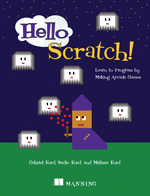
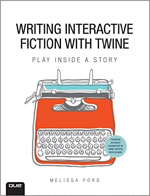
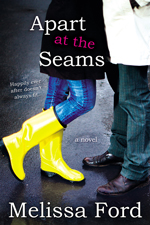
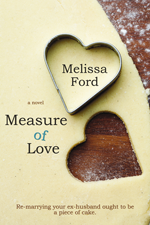
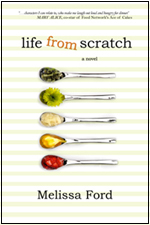
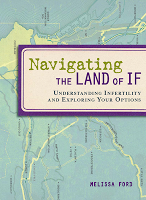


12 comments
Very perceptive of the ChickieNob! Also, I totally agree that shorts and tee shirts would be much better crime-fighting gear.
I must also note that this is now probably one of my favorite lines anywhere, ever: “It’s almost like men think that we like to fight crime by whacking bad guys with our boobs.” I will never, ever see a female superhero the same way ever again :).
Great post. Never taken my kids to a convention such as this. Guessing their reactions similar to ChickieNob. Regards.
I love this post! Your comments on girls feeling unwelcome in the geek/nerd world reminds me of this video: https://www.youtube.com/watch?feature=player_embedded&v=J0ggK9-TBVY
She talks about why there are fewer and fewer “geek girls” out there, mostly because they feel unwelcome by their male counterparts.
Every time you talk about ChickieNob, I’m amazed at how insightful she is. She seems like an amazing young lady.
I couldn’t agree with this more. I’m always railing on to my husband about that same issue, and he agrees with me. I think young girls should have more options, and I would hope my son would understand those differences too.
Another one here who is continually in awe of the ChickieNob’s astuteness.
Along a similar line but in a different arena and with a different stragegy, there’s this: “HBO Should Show D*#&s.”
NSFW or kids.
Yes, this is definitely an issue. But it is also getting raised.
Have you seen Jim Hines series of cover poses? He did a series of poses showing how unrealistic urban fantasy/romance novels/ comic books cover portrayals of women are. It’s good someone is calling attention to it, kind of frustrating that he is taken more seriously then women calling this out.
I think it does take seeing them in 3d/on a person to realise how uncomfortable/unrealistic it is.
I am seeing an increasing number of comments on this issue, and each time someone says how they have issues with it, it allows the next person to do so without feeling like they are the only one. I saw an article on Gawker in the last week on a game developer who objected to the costume a character wore.
And i went and found the link and forgot to post it
http://www.jimchines.com/cover-posing/
funny how ridiculous the poses look when its a man not a woman
and this
http://knowyourmeme.com/memes/the-hawkeye-initiative
the voices are getting louder.
I was thinking about this when people got all up in arms–rightly so, from my perspective–about the transformation of Merida. But this is particularly complicated … because it appears to me that from the beginning, female superheroes did have a lot to do with bedroom appeal, and it seems that only later they were pitched at a younger, and female, audience. There’s still definitely a problem, given that younger girls are now interested in superheroines, and that we need role models without cleavage. But it’s a problem that seems to have a very specific history … ??
In mature material there is nothing wrong with sexuality being shown in comics or being expressed by fans. That said, I essentially agree on the definition of the issue. Although, I have a nuanced and perhaps naturally slightly different take. This is not to say, yours is simple. In fact, it maybe more high rode and practice. Mine, perhaps a paradox or in conflict.
I came to a similar conclusion in the 1990’s as the problem truly solidified. The aesthetics and narrative in depicting women in most superhero comics was failing female and male readers. I was an aspiring cartoonist and life long teenage fan. Up to that point my understanding of comics as a medium and not a genre was already forming. This was partially because my path into comics had some substantially diverse stepping stones as a kid; Star Wars, Tin Tin, Elf Quest, Calvin & Hobbs, Mad Magazine, The Super Friends, Wolverine & The X-Men, Robotec, Kamandi, and Love & Rockets. I was a HUGE superhero fan (that’s what I wanted to draw), but I was influenced just as much by stories outside of comics, music, social causes and my friends. I already had a romanticized view of the comics business. Late night sweatshop working conditions, with old curmudgeon, booze & pipe smoke and practice jokes. Yeah that would be the life, especially for this 80’s punker kid. However, growing up in the progressive Bay Area, to a multicultural family and having mostly female friends…well the 1990’s Superhero comics aesthetic didn’t sit well. Particularly with a this feminist; even if I was a male with hormones all a rage. I did not find the product Marvel, DC & Image were selling appealing.
I was late to college and was majoring in Sequential Art (Comics), by the end of the decade. I was mostly at home with my piers, but the paradox was they were with few exceptions slightly younger and far to comfortable with this new aesthetic. A small coalition in our already small (but growing) major found this disturbing. Lesson about anatomy and life drawing were seen as a waste to this predominantly young male class. Lesson regarding storytelling fundamentals were equally ignored. It seemed that for the majority of our class, women were depicted as two demential. Honestly, so were the men.
Since then, there has been an explosion in both Comics education and social media. This has amplified the problem, just as education is beginning to stem the tide. Our program is far more focused on correcting the quality of work. More importantly, there are now competing programs. Some which you would be hard pressed to find any one making comics that remotely represent women in anything less then diverse complex characters.
This brings me back to the point of genre. Comics have never been of a single genre. Women have always been involved in either creative or business roles when it comes to the Comics Industry. At no other time have they had more impute, creatively & editorially. In fact the head of DC Entertainment is a women. And she is not the first to hold an equivalent role in comics. In the mid 21st Century the head of Dell Comics was a Women.
Still, the business has always been dominated by men and the content has reflected the culture within this limitation. With this in mind, there have been periods and places that have helped inform work that has cause revolutionary, been sexist, racist, gross, horrific & violent. In fact, some see this as the wonderful thing about comics. I have to say, I don’t disagree. Comics are a medium. One that seems to have (despite Senatorial, judicial, religious and medical interference) maintained the ability to communicate unimpeded. Sure, we had the comics code and we continue to fight for your points. But, I have to admit, I enjoy the complexity and chutzpah of a great cartoonist. The medium remains creative, evolving and doesn’t pull punches if it can help it.
Here is where I totally agree with you. I am now a 30 Something Cartoonist with a young daughter. Now I know, way to much about comics. So I am aware that there is a driffrence between Art Baltazar and Daniel Clowes. One I would read to any kid any time. And one, I would not. However, I also remember being that kid who discovered R. Crumb to early. I didn’t get what I was seeing, but it made an impression. One that made me a better cartoonist and better person ultimately. So I don’t loose sleep at night over what my daughter may find on her own. But I do have the luxury of bringing quality age appropriate comics to her attention.
Whith what is happening recently (really all the time since comics became popular) with issues involving, diversity, depiction of women, creative rights, copy right law, corporate powers…well, there is always some cartoonist adding to 100 years worth of quality work in a large variety of genres. So as far as the act of sharing work with your child…it’s there. There is also work for you to enjoy, as well as the the sleaze down the road (how they got the biggest piece of the pie…well that’s another story).
What is truly broken (and people in power who don’t care to fix) is the delivery system of content. There are a few wonderful conventions for those who don’t really like superheroes. There are still a few conventions for those who do, but don’t care for TV and Film high jacking the limelight. What is missing is a convention that is truly kid dedicated. This is because of the nature of the business model the Superhero comics industry has developed over the years and the nature of the fan base they are afraid to loose. Until, the fear is let go of, we won’t have a place we can bring our kids with the expectation of a purely kid friendly environment. Comics have never been just for kids (despite the conventional wisdom). Especially Superheroes. That said, Marvel & DC haven’t exactly been 100% focused on the moral foundations that Superheroes were born to represent. Which is why, they seem to change for the worse and not the better. There are wonderful exceptions for kids and for adults. I hope you find and enjoy them. Because comics are truly the best storytelling art form we have.
Yes, I won’t be whacking anyone (on purpose) with my boobs… LOL. Love that.
I couldn’t help but think of the lady who writes Epbot and her Comic Con costumes. The two I’ve seen are amazingly made, not too revealing and might even be ok in the moving around department.
Here is her Lady Vadore: http://www.epbot.com/2012/08/presenting-lady-vadore.html
And her White Rabbit: http://www.epbot.com/2013/08/my-white-rabbit-reveal.html
Her husband’s costumes are pretty cool too!
Coming late to this but shared with a friend who has a book on the Real Life Superhero Movement for his thoughts. He mentioned a there is a group working to bring awareness and respect for cosplayers (“Cosplay is not Consent” is their name), but also a couple of comics which are geared toward younger readers. From him “Lilith Dark, by Charles Dowd. Also, Lenore is a good comic by Roman Dirge about a little dead girl (not morbid, actually adorable) who goes on little Poe-like adventures.”